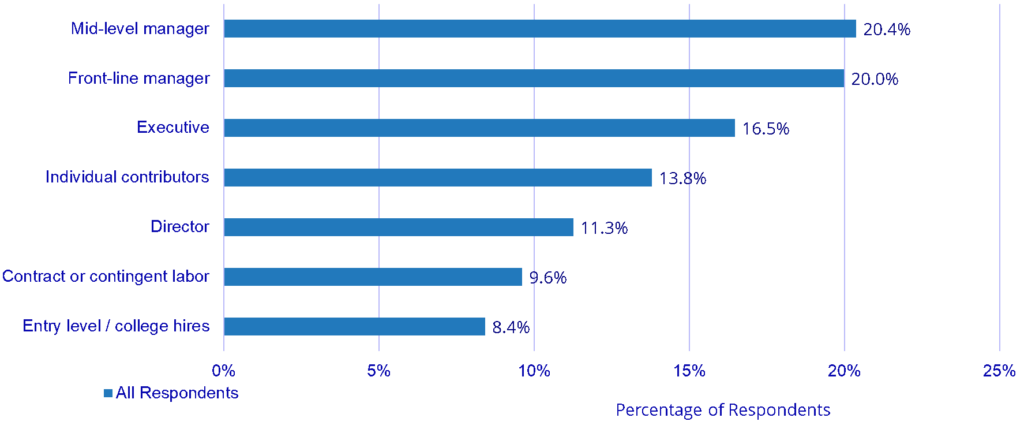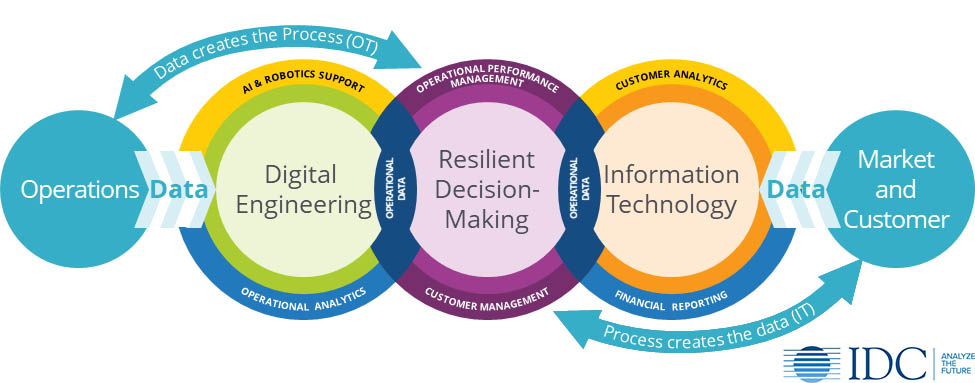Why Middle Management Exists in Operations
I am going to discuss something that is so engrained in how we operate, few people even consider or question the reason for its existence. We all know them and many us populate this class of employment known as middle management. For centuries, no sizable organization could exist with the owner or executive level operating a company directly supervising their workers at the point of activity. From managers to supervisors to foremen, someone must take executive decisions from senior management and translate them to realistic tasks for individual workers. That same flow happens in reverse. Information on operational progress must move up the chain to become digestible information for senior managers.
A person can only handle so much data and information in short period of time. And they can only make a limited number of effective decisions at the same time. But let’s look at the cost of information flowing through that middle management-based hierarchy:
- Slow and incomplete information flow to decision-makers – It can take days, week, and even months for the information needed for senior decision makers make its way up through layers of staff who each must collate, analyze, and interpret the data.
- Slow response once decisions are made – Once the data is collated into actionable information, orders or tasks must then make their way down that same middle management layer.
- Biased and misinterpreted information – Information on the way up has to pass through several organizational layers with biases shaped by personal goals, KPIs, and incentives.
- Timeliness of decisions – All that up and down activity means that by the time the decision reaches the point of activity, there is a good chance the decision is obsolete.
- Creating silos of information: Middle managers tend to create or reinforce siloes in the organization and unintentionally limit free collaboration.
Let’s use manufacturing as an example. As Figure 1 shows, one of the biggest concerns manufacturing companies have today from a staffing perspective is not engineers and technical staff driving innovation, its middle managers.
Figure 1: Staffing Needs for Manufacturing Organizations

Source: IDC Talent Management in Manufacturing Survey, 2020
The insatiable need for middle managers is directly attributable to the explosion of data and the increasing demands from senior management for faster decision-making cycles. But effective middle managers must have a unique combination of detailed domain expertise, creativity, charisma, and ambition. These traits are very hard to find in combination, especially for manufacturers, as the industry struggles from a skills gap and is generally viewed as less appealing than other industries by the younger workforce.
From Middle Management to Digital Engineering
But these new data-centric systems are not the main part of the change and transformation. It’s the organization that IDC calls the Digital Engineering organization. IDC’s vision of the Future of Operations (IDC Perspective: Digital Engineering and the Future of Operations, April 2020) is for an operation based on resilient decision-making that is driven by customer and market activity. The core of that new organization is senior decision-makers sitting within an AI-driven decision-making framework fed by business and market information from IT and operational information from Digital Engineering.
Figure 2: Digital Engineering Is the Middle Management for the Future of Operations

The DE organization is the new middle management in operations. This staff has a combination of domain expertise, some IT skills, and digital capabilities. Successful middle managers not only had domain expertise, but they had learned through experience how to work with IT. And they tended to lead the way in digital projects. All the Digital Engineering organization is doing is recognizing that shifting responsibilities for operational data needs to the DE group staffed from various siloes in the organization.
But it’s important to be realistic – right at this moment in time I do not believe anyone can automate access to data and decision frameworks so much that middle managers are literally exiting the workforce. Again, the transformation is the middle managers becoming digital engineering staff. In that role they become less movers of data and more owners of a rapid and resilient decision-making framework.




